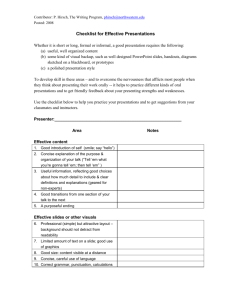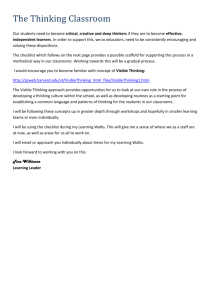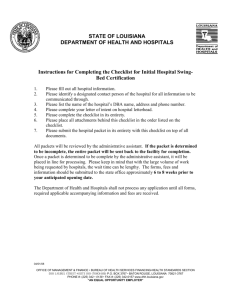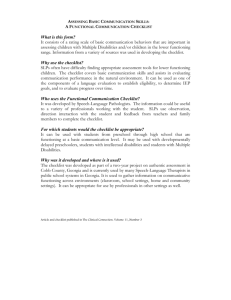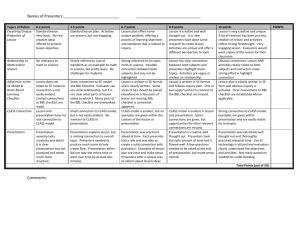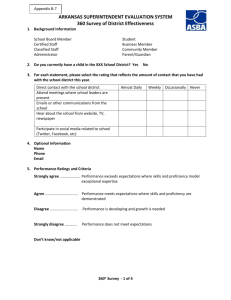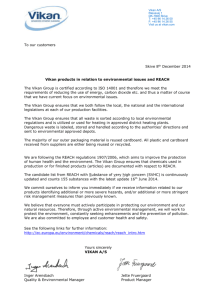Tool # 1- Key Elements of Collaboration Checklist - AHC
advertisement
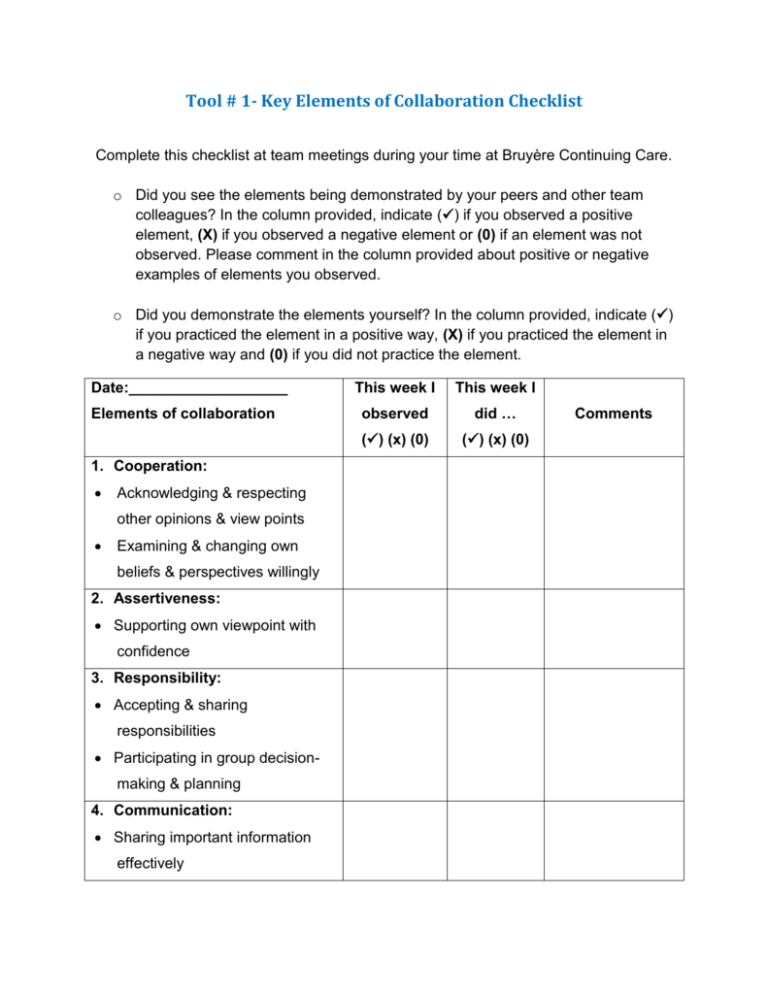
Tool # 1- Key Elements of Collaboration Checklist Complete this checklist at team meetings during your time at Bruyère Continuing Care. o Did you see the elements being demonstrated by your peers and other team colleagues? In the column provided, indicate () if you observed a positive element, (X) if you observed a negative element or (0) if an element was not observed. Please comment in the column provided about positive or negative examples of elements you observed. o Did you demonstrate the elements yourself? In the column provided, indicate () if you practiced the element in a positive way, (X) if you practiced the element in a negative way and (0) if you did not practice the element. Date:___________________ Elements of collaboration 1. Cooperation: Acknowledging & respecting other opinions & view points Examining & changing own beliefs & perspectives willingly 2. Assertiveness: Supporting own viewpoint with confidence 3. Responsibility: Accepting & sharing responsibilities Participating in group decisionmaking & planning 4. Communication: Sharing important information effectively This week I This week I observed did … () (x) (0) () (x) (0) Comments Date:___________________ Elements of collaboration This week I This week I observed did … () (x) (0) () (x) (0) Comments Exchanging ideas & discussing things effectively 5. Autonomy: Performing your professional responsibilities independently 6. Coordination: Organizing group tasks & assignments efficiently 7. Trust & Respect Respecting other’s knowledge and skills *Share your observations with at least one other learner or team member Adapted from Jones & Way (2001), Norsen et al. (2005) Tool #2 Family Meeting Checklist The following checklist is a useful tool to monitor collaboration within the family meeting. If you participate in a family meeting during your time at SCOHS, review the meeting using this checklist. Check whether or not you observed these skills demonstrated. Observation Context: Ensures privacy in a quiet room, no distractions Ensures everyone is seated with no physical barriers Ensures relatives sit next to person in care Demonstrates a relaxed and unhurried approach Maintains eye contact throughout Initiating the Meeting: Greets person in care and family Introduces self and identifies role Introduces reason for family meeting Establishes facilitator for meeting Communication Skills: Time constraints explained at beginning of meeting Uses open-ended questions Listens attentively, allowing members to express concerns Facilitates responses verbally and non-verbally Clarifies issues which are ambiguous or awkward Summarizes periodically Uses language which is concise, easily understood and jargon-free Presents information in a clear, simple format Acknowledgment of Emotions: Identifies emotions experienced by person in care and family Identifies cause or source of emotion Supportive during emotional episodes and avoids defensiveness and inappropriate closure of issues Information Exchange, Decision-Making & Care Planning: Yes No Observation Yes No Issues and concerns clearly identified Aids care planning according to issues and concerns discussed Plan clearly outlined to family Assesses family’s response to plan Ensures team and family agree on plan Summary: Summarizes main issues and outcomes Asks if there are other issues to be discussed Establishes clear contract for next contact and follow-up Comments: *Share your observations with at least one other learner or team member Adapted from S. Dojeiji, P. Hall, E. Keely, University of Ottawa


![Assumptions Checklist [Word File]](http://s3.studylib.net/store/data/005860099_1-a66c5f4eb05ac40681dda51762a69619-300x300.png)


